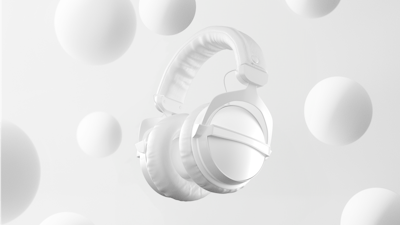How does your calibration work?
Measurement
Sonarworks headphone measurement technology delivers Sonarworks PAPFR (Perceived acoustic power frequency response) technology on headphones. It is an innovative, patent pending measurement technology that measures headphone AFR as perceived by human ear rather than as measured by a measurement microphone. Our approach ensures that calibration based on Sonarworks measurement data consistently delivers accurate sound for the listener, enabling him or to take control over the sound of the headphones. Sonarworks headphone measurement and calibration is done at normal listening volume of 83dB SPL.
Calibration
Sonarworks calibration engine adjusts the sound signal going to the headphones based on the headphone measurement profile and user selected reference target, to ensure that the headphones accurately deliver the reference sound of listener’s choice.
The default flat frequency response reference target is made to match the frequency response of flat sounding speakers, ensuring smooth translation between working on studio monitors and headphones. Depending on personal preference, the user can adjust the reference target curve to deliver a different sound character. Sophisticated algorithms behind the calibration engine allow you to adjust plugin filter settings to find optimal balance of delay and phase response accuracy to match the requirements of your use-case. The calibration engine is implemented as DAW plugin to ensure best fit with the work routines of recording studio professionals. At the moment Sonarworks supports AAX, RTAS, AU and VST plugin standards.
Simulation
Besides reference target calibration Sonarworks technology enables accurate AFR simulation of different audio devices: popular consumer headphone models, hi-fi speakers and studio speakers. Device simulation enables you to check how your record will sound on different consumer devices at the push of a button
What do you mean by saying that your software makes headphones sound like “flat speakers”? Isn’t flat FR correct everywhere?
The way how people perceive sound coming from speakers is different than sound coming from headphones. In addition to head related transfer effects, you will get ear canal resonances and the kinetic experience of bass. Our unique calibration process employs a transfer curve developed by experts that delivers sound signature as close as possible to what will be heard by human when listening to neutral speakers. This dramatically improves translation between headphones and speakers when creating records.
What parameters of sound signal is Sonarworks plugin compensating for?
Sonarworks calibration plugin compensates for AFR non-linearities of the headphones. From our experience AFR is the most significant factor that governs how the headphones will sound and ironically – it’s also the field which we found to be particularly troublesome.
Currently Sonarworks plugin does not compensate for other factors that influence sound perception such as:
- THD. Currently Sonarworks plugin does not offer THD correction, so we recommend getting headphones with the lowest possible THD.
- Phase distortion. At the moment we do not offer Phase distortion compensation within Sonarworks plugin, however we do make sure that Sonarworks plugin maintains perfect phase linearity of the signal if “Linear phase” filter type is selected.
- HRTF. Our plug-in does not support it, not yet at least.
Many headphone manufacturers state that their products offer “reference sound” – why do their headphones need calibration?
While we have utmost respect for many headphone manufacturers about what they have given to the industry, yet our measurements show that there is no perfect headphone. Every product has its limitations that are usually dictated by their design (and sometimes the marketing department). There are many outstanding headphones currently on the market, yet there are none which wouldn’t benefit from our software. Some acoustic problems are extremely hard to overcome by physical design only; hence our software gives the headphone the help it needs to perform to its fullest potential.
So you’re saying that every headphone, when corrected with Sonarworks, will sound the same?
Yes, that is our claim given that the same reference target is set for both headphones. This is of course subject to small differences imposed by the physical limits of the headphone and differences in headphone THD profiles.
For what loudness is Sonarworks plug-in designed?
All measurements and calibrations are done to ensure flat perceived frequency response at 83dB. This is one of the commonly used sound pressure levels in many studios.


